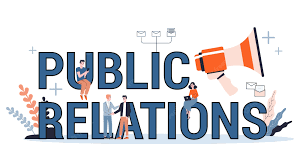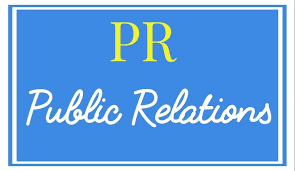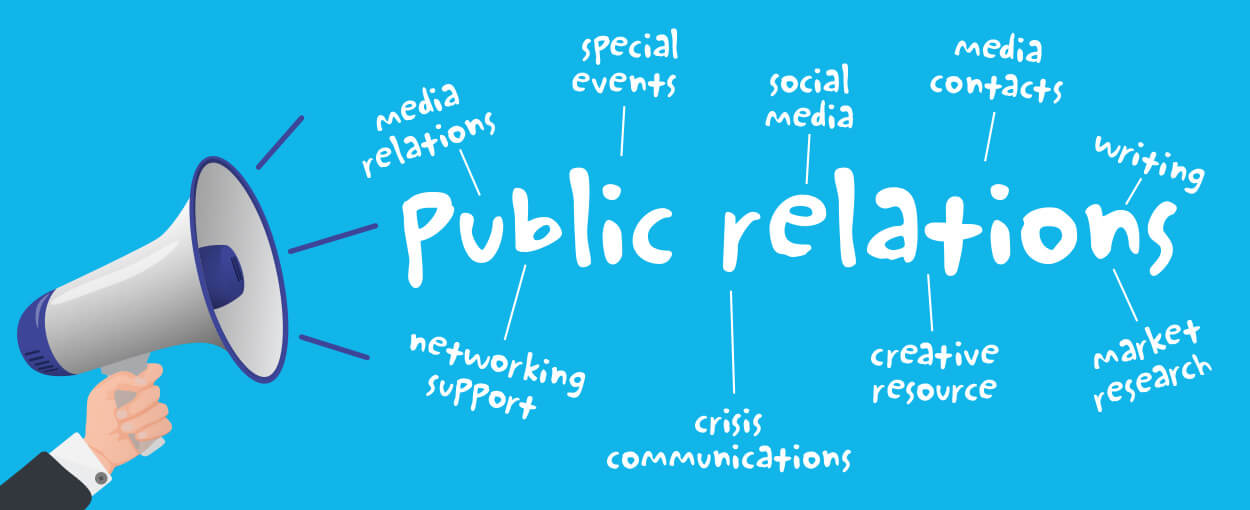What is the full form of PRPR: Public RelationsPR stands for Public Relations. To influence how the public perceives an individual or an organization, public relations (PR) is the process of controlling and distributing information from these sources to the general public. Public relations (PR) and publicity are distinct because PR is handled internally while advertising is not regulated and is generated by outside sources. Public relations can involve a company or individual acquiring visibility to their target audiences through news stories and issues of general interest that don't require money. Media is the primary exposure source, distinguishing it as a marketing communication type from advertising. Public relations work to secure earned media coverage for clients rather than marketing or advertising, which costs money and is also referred to as bought media. Advertising, however, is now a part of PR operations in the early 21st century. 
Creating an article featuring a client of a PR agency instead of paying for the client to place an advertisement next to the piece is an example of brilliant public relations. Public relations aim to persuade the general public, potential customers, investors, partners, employees, and other stakeholders to maintain a favorable opinion of the company, its management, its products, or its political actions. Public relations specialists often work for public relations and marketing agencies, companies and corporations, government and public officials as general information officers, nongovernmental groups, and non-profit organizations. There are internal positions in the field of public relations, such as those of public relations coordinator, specialist, and manager, as well as external positions, such as those of account coordinator, executive, supervisor, and media relations manager, which involve working with outside organizations. The media, pertinent trade media, and other opinion leaders are all contacts that public relations. Professionals cultivate an organization's target audience by writing press releases and other news content, communicating with the media, arranging interviews for company spokespeople for press conferences, media appearances, and lectures, writing content for websites and social media, managing brand reputation (crisis management), working internal communications, and collaborating with magazines. Understanding the issues and interests of all the different corporate stakeholders in-depth is essential for public relations success. The public relations practitioner must understand how to effectively address those problems by utilizing the most potent instrument in the public relations trade publicity. History of Public RelationsBefore the 20th century, public relations has a long history. According to most textbooks, the "Publicity Bureau's" foundation in Boston in 1900 was the beginning of the public relations industry. Researchers have discovered the earliest examples of general influence and media management in ancient civilizations. The fundamental principles of persuasion, for instance, are explained in Aristotle's Rhetoric. In terms of evolution, PR is thought to have only gotten better with time. Evidence suggests that it continued to change during the New World's colonization and the English slave revolt. Because he founded "Editorial Services" in 1924, Basil Clarke is regarded as the father of public relations in the UK. 
The concept of propaganda, which eventually developed into public relations, was embraced by the United States, the United Kingdom, Germany, and other countries throughout the World Wars to mobilize domestic support and demonize enemies. It is said that World War I (1914-1918), which had an impact on entire populations and the military, served as the "launching pad for modern propaganda." Artists and poets, like Mayakovsky, participated in public relations efforts for various government organizations and causes in 1920s Soviet Russia, which was still in its infancy. As a result of the Marshall plan of 1948-1952, several American businesses with PR departments introduced the concept to Europe when they established European subsidiaries. Professional public relations development began in the latter half of the 20th century. Trade organizations, PR periodicals, global PR firms, and academic standards for the field were developed. Press releases for social media first became available from news release firms in the early 2000s. In 1999, the Clue train Manifesto, which foresaw the implications of social media, caused controversy. However, by 2006, the public had started to accept these repercussions. Employment and EducationFor jobs as public relations professionals, a bachelor's degree in journalism, communications, public relations, marketing, or English is often required. A 2015 poll indicated that 40% of chief communications officers at Fortune 500 corporations had master's degrees, meaning that many senior practitioners had advanced degrees. 18,000 of the 21,000 members of the Public Relations Society of America who participated in the 2013 study held the Accreditation in Public Relations. SalaryAccording to a 2019 PR Week poll, public relations professionals make an average of $95,000 yearly, with sector medians ranging from $85,000 for non-profit organizations to $126,000 for for-profit businesses. The median annual salary for "public relations professionals" in 2017 was $68,000, while for "public relations managers," it was $114,000, according to the Bureau of Labour Statistics. Public relations specialists in the US private sector who work for PR agencies make a median salary of $57,940, according to the US Bureau of Labor Statistics. According to reports, the median pay for those working in the public sector is $65,310. According to the data gathered, the average yearly salary for persons working for professional, labour, political, and similar groups is $66,340. As of 2013, the average salary for the chief communications officer (CCO), a c-level role, at certain private companies was above $220,000. In contrast, a 2009 poll by Fortune found that the average annual compensation package for CCOs at Fortune 200 businesses was slightly over $1 million. This sum includes base pay, bonuses, and stock options. The U.S. Forest Service hired the most public affairs specialists in the United States federal government, with an average compensation of about $101,922 in 2016. The Federal Aviation Administration has the highest average salary of all federal government departments, with more than one public affairs employee, at about $150,130. The highest-paid public affairs employee in the US government made $229,333. Public relations professionals make a wide range of salaries in local government. In 2017, the city of Conway, South Carolina, offered an entry-level wage for a general information officer that started at around $59,000 annually. The chief communications officer for the Utah Transit Authority made $258,165 in 2014. According to a 2017 survey from the United Kingdom's Cosmopolitan, the typical yearly wage for a "public relations director" was £77,619. Former Prime Minister David Cameron is a well-known example of a former PR professional. According to a June 2019 Indeed research, the typical yearly compensation for a "public relations manager" was $59,326. The need for PR professionals is still increasing, but Stats Canada reports says that the demand for journalists has not increased. Most journalists transition smoothly into public relations and bring crucial skills to the field. TacticsProfessionals in public relations portray an organization's or person's face to the media, usually to communicate their goals and official positions on pertinent matters. Through swaying the media and preserving connections with stakeholders, public relations helps shape how a company is seen. Public relations specialists are "discourse workers specialized in communication and the presenting of argument and applying rhetorical tactics to attain managerial goals," according to Dr. Jacquie L'Etang of Queen Margaret University. Particular Public Relations Specialities Include
A key aspect of public relations is establishing and maintaining connections with those who have sway over an organization's or person's target audiences. A public relations specialist develops a network of contacts after some time in the field, which can be helpful, especially for those in media relations. 
Within each subject, typical activities include speaking engagements, press conferences, press kits, newsletters, blogs, social media, and outbound press outreach. ANRs and VNRs are frequently created and distributed to TV broadcasters in the expectation that they may be used as regular programme material. Audience TargetingIdentifying the target audience and customizing communications that are pertinent to each audience are fundamental public relations techniques. A public relations campaign may occasionally need the development of multiple unique but related messages to address the interests of various audiences and stakeholders. But to create consistency in the overall message and theme, these messages need to be related. Since public relations professionals deal with a variety of is arousing low visibility, a lack of general understanding, opposition from critics, and insufficient funding from sounding funding sources, sorting tactics are crucial. 
In contrast, stakeholder theory recognizes those that are interested in a specific institution or issue. Although all stakeholders (or presumed stakeholders) are audiences, not all stakeholders are target audience members. For instance, if a charity hires a public relations firm to develop an advertising campaign to generate money for research into an illness, the charity and the individuals affected by the sickness are stakeholders. Still, anyone who is likely to provide money is the target audience. Media relations, market positioning, and branding are all areas in which public relations professionals excel. They act as effective agents for clients, assisting them in providing precise, unambiguous information to a target audience that is important to them. The Public in Public RelationsThe term "public" refers to any group, such as a political party, whose members share a common interest or set of values. Then, those participants would be regarded as stakeholders with a stake or interest in a group or issue that might affect the group or organization they are interested. In public relations, the public is: Traditional Publics: Individuals with whom the person has a stable and long-term relationship, such as coworkers, the media, governments, investors, and clients. Non-Traditional Publics: These are social groups that an individual has not previously interacted with or with whom the organization usually is unfamiliar, but which could alter if the organization, society, or a group-changing event take place. Latent Publics: A group whose members have yet to recognize that their values overlap with the organization but they are not yet aware of the connection. Intervening Publics: Any influential person or the media are examples of intervening publics that can assist a person in communicating with another public. Primary Publics: Any group of people who have the power to influence an organization's pursuit of its values-based objectives directly. Media, employees, the government, shareholders, financial institutions, and the local community would all fall under this general category. Secondary Publics: Sharing the same level of interest in the company as the prime publics but are not directly impacted by organizational actions. Internal Publics: Members of the company External Publics: Individuals outside of a company Domestic Publics: Citizens of the nation International Publics: When speaking with this public, people must be mindful of that region's culture, beliefs, values, ethics, and other significant cultural differences to avoid offending anyone. Early research by James Grunig (1978) stated that the public goes through stages based on their levels of problem perception, constraint recognition, and involvement in solving the problem. According to the hypothesis, the crowd goes through the following stages as they develop: Non-publics: Don't discuss a problem with a group. Latent Publics: People who are affected by a problem but are unaware of it. Publics who are apathetic: They are aware of a problem but are uninterested in fixing it and publics who are aware of a problem but are not organized to mobilize against it. Publics engaged: They are aware of a problem and prepared to solve it. MessagingThe act of telling a unified story about a good person, business, or service is known as messaging. Messaging prevents readers from receiving conflicting or muddled information that will cast doubt on their purchasing decisions or other actions that impact the business. Brands want the same issue to be addressed across all sources and media, as well as the same industry perspective or brand perception. Social Media MarketingSearch engines, Web 2.0 social bookmarking, new media relations, blogging, and social media marketing are examples of online tools and technology that fall under digital marketing. 
Interactive PR enables businesses and organizations to share information without simply depending on well-known periodicals and to speak with the general public, clients, and potential clients. Other MethodsLitigation public relations control the communication process throughout any legal proceeding or adjudicative procedure to influence the result or its impact on the client's overall reputation. ConclusionPoliticians also work with public relations specialists to best present their ideas, programs, and even personalities. Public relations professionals work to advance the public's interests and the personal goals of corporations, groups, government agencies, and non-profits. This dual responsibility leads to passionate discussions about the discipline's core principles among academics and practitioners
Next TopicFull Form
|
 For Videos Join Our Youtube Channel: Join Now
For Videos Join Our Youtube Channel: Join Now
Feedback
- Send your Feedback to [email protected]
Help Others, Please Share










